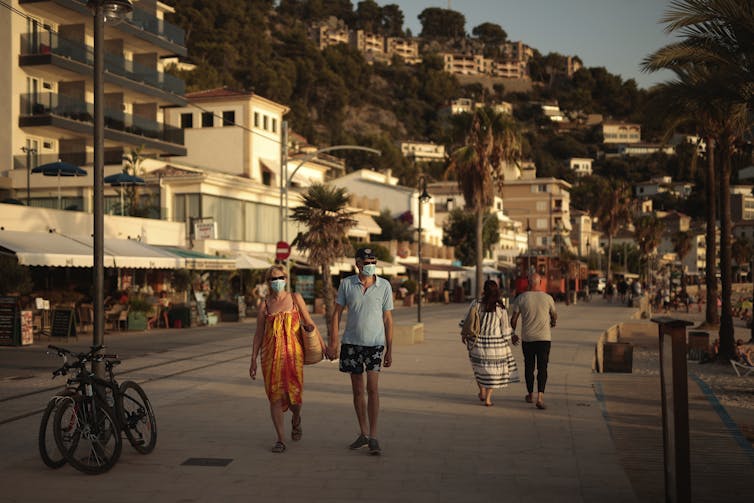By John Gradek, McGill University
In late 2019, the International Air Transport Association (IATA) published its “Economic Performance of the Airline Industry” report. It contained a 2020 forecast of 4.1 per cent growth in global air traffic demand and net post-tax profits for North American airlines of US$16.5 billion.
Travel industry consulting firms predicted the continuing pattern of travel growth across all of the major components of travel including hotels, cruises and surface travel as well as air. The forecast for travel was sunny, with few clouds on the horizon.
Fast forward to the summer of 2020, and the IATA is forecasting the worst financial performance in the history of commercial aviation, predicting a global loss of US$84 billion. And the aerospace industry supporting airlines with equipment parts and services pronounced that 2020 is the gravest crisis the industry has ever known.
Permanent changes?
Let’s review the lessons being learned by the travel industry during the COVID-19 pandemic and how travel might be different as the world deals with the aftermath.
Travel has evolved significantly in the past six months since the spread of the COVID-19 pandemic. There will likely be a number of current initiatives in passenger and facility hygiene and sanitation that will stay in place post-pandemic.
The woes of cruise ship operators, in the meantime, will continue as travellers continue to remain wary of travel in confined spaces.

Public health officials have identified three societal practices that are key to controlling the spread of COVID-19, each of which have an impact on the allure of travel — social distancing of two metres, frequent and intense hand-washing to reduce the risk of hand-borne transmission of the virus to the face, and face coverings in confined spaces.
While it’s generally accepted that the minimum social distancing cannot be maintained while travelling in today’s commercial aircraft, some carriers — though not all, including Air Canada — have adopted a policy of leaving an open seat beside a passenger.
Empty middle seats
This initiative has attracted the attention of both public health officials as well air transport executives and associations, resulting in an attempts by an American legislator to regulate empty middle seats on flights. Airline executives have predicted a dire financial impact from this attempt to ease crowding on airliners.

Quarantines are also being used by authorities to mitigate the spread of COVID-19 from travellers arriving from jurisdictions that have a higher level of virus cases.
These quarantines range from in-country travel bans among states or provinces to national quarantines for travellers arriving from high-risk regions. Typical quarantine provisions can range from seven days to 14 days of self-isolation, with some authorities imposing strict adherence through personal monitoring systems.
Travellers’ health concerns are being reinforced by public health officials who are advocating for a return to lockdowns and advisories to refrain from travel, including from the top infectious disease expert in the United States, Anthony Fauci, who has raised concerns about the risks of getting on an aircraft. The debate between public health officials and airline executives will undoubtedly remain tense as the world continues to grapple with the first wave, and in some places a second wave, of COVID-19 outbreaks.
‘Travel bubbles’
A growing number of countries have allowed the travel industry to promote “travel bubbles” and “corona corridors” as first steps to jumpstart air travel and tourism. These measures involve agreements with neighbouring regions that allow for travel across borders for non-essential trips without quarantining upon arrival.
But there’s still the risk that such efforts will be short-lived given the resurgence of COVID-19 and the subsequent reimposition of quarantine practices in various parts of the world, including Spain.

The need to develop an effective contact tracing platform that would have global connectivity has been broached, but it remains in the discussion stage only. Issues such as personal information rights and general distribution of location data have raised privacy concerns in a number of countries.
The International Civil Aviation Organization (ICAO) has recommended several data-sharing practices, but the UN body also acknowledges that a global, harmonized deployment ought to be a guiding principle to successfully contain the impact of the COVID-19 pandemic.
IATA has also produced a set of guidelines for a gradual return of air services
The consensus among public health officials and travel industry executives is that travel will continue to stagnate until a COVID-19 vaccine is effectively administered globally.
But questions remain.
READ MORE: Creating a COVID-19 vaccine is only the first step. It’ll take years to manufacture and distribute
Will the industry survive until a vaccine?
How long until there’s a vaccine, and can the travel industry survive until then?
What role should governments play in ensuring the survival of the travel industry as it waits for the vaccine?
Will public health pressure be sufficient to overcome the reticence to share personal contact movement and information?
As the world progresses towards a COVID-19 vaccine and the eventual control of the virus, the travel industry will most certainly face demands from the travelling public to maintain several of the current safety and hygiene initiatives.
Cleanliness and sanitization will become the norm. Touchless interactions will proliferate, and technology will reduce human interaction.
Will the joy and exhilaration of travel return? Yes, but with a new value proposition built around safe and secure travel. Much like air travel changed after 9/11 with security screening, so will COVID-19 change our demands for a safe, clean travel experience.
John Gradek, Faculty Lecturer and Program Co-ordinator, Global Aviation Leadership Program, McGill University
This article is republished from The Conversation under a Creative Commons license. Read the original article.


